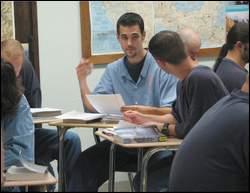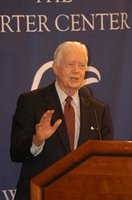 we were blessed with perfect minnesota weather for saturday’s running of the santas. via the pi press:
we were blessed with perfect minnesota weather for saturday’s running of the santas. via the pi press:
For the second year, a pack of Santas went for a run on Nicollet Mall in Minneapolis as part of the Santa Run to Benefit Legal Aid. You didn’t need connections to Mr. Claus to participate – a $10 registration fee and a minimum $100 sponsorship got Santa wannabes entered in the 1¼-mile run and a Santa suit, hat and white beard; kids just got Santa hats.
“They got two paths cleared down the mall in time for the Santas to run back and forth,” said Bruce Adelsman, who photographed the event for skinnyski.com. “It’s fun to see the reaction of people who are downtown shopping and don’t know the event is going on – at first they see one or two Santas, followed by a wave of Santas, and they stop and stare.”
mid-minnesota legal assistance is a terrific cause, worthy of year-round non-santa-specific support:
Mid-Minnesota Legal Assistance (MMLA) is the primary provider of general civil legal services to low-income and elderly people in 20 central Minnesota counties. It also provides legal services to elderly persons in two additional counties. MMLA provides these services through its three member corporations: the Legal Aid Society of Minneapolis (LASM), St. Cloud Area Legal Services, and Western Minnesota Legal Services. This structure allows MMLA to staff three offices in Minneapolis, as well as offices in St. Cloud, Cambridge and Willmar. The oldest corporate component of MMLA —the Legal Aid Society of Minneapolis— was founded in 1913. LASM is also the state-designated Protection and Advocacy agency for persons in Minnesota with developmental disabilities, mental illness and other disabilities. And it is the state Client Assistance Program that protects the rights of those seeking services from the vocational rehabilitation system.
apart from the year-round needs, a seasonal nicollet mall santa run seems like a really cool way to raise both cash and consciousness. here’s a li’l video from last year’s (snowless) event.





 a new report on reducing america’s prison population came out this week, co-authored by some of my favorite criminologists: james austin, todd clear, troy duster, david greenberg, john irwin, candace mccoy, alan mobley, barbara owen, and joshua page.
a new report on reducing america’s prison population came out this week, co-authored by some of my favorite criminologists: james austin, todd clear, troy duster, david greenberg, john irwin, candace mccoy, alan mobley, barbara owen, and joshua page.

